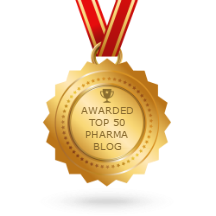Lower Cost and Safe Foreign Drugs: An Inconvenient Truth?
While it’s a life (and wallet) saver for millions of Americans, it seems to me that safe personal drug importation is an inconvenient truth for the U.S. Food and Drug Administration. A couple of weeks ago, The New York Times published a Letter to the Editor, “Unsafe Foreign Drugs,” by FDA Deputy Commissioner Howard Sklamberg as a response to my op-ed. His letter didn’t refute the gist of my position: the FDA and other regulators should not scare Americans or fool policymakers into believing that genuine medications purchased by Americans from licensed pharmacies in Canada and other countries are as dangerous as counterfeit drugs.
Mr. Sklamberg wrote, “Gabriel Levitt criticizes the Food and Drug Administration’s position that unapproved foreign drugs pose the same health risks as counterfeit drugs.” In fact, I do more than criticize FDA’s position. Their position is false and illogical. When FDA talks about “foreign unapproved drugs,” it often means real medication available in foreign pharmacies. That medication is either exactly the same as the medication sold here or a foreign version with the same active ingredients as medication sold here. When FDA talks about “counterfeit drugs,” they generally mean fake medication: products sold by criminals that fool people into believing that they were manufactured legally. In other words, it’s medication not licensed for sale in any country because the manufacturers – “counterfeiters” – were not authorized by any regulatory authority to make the drug. Real medication that is made under good manufactured practices and properly prescribed to a patient is almost always safe and effective. Fake (counterfeit) medication is almost never safe. For those reasons, claiming that drugs sold from pharmacies in other countries are as dangerous as counterfeit drugs is ridiculous.
Mr. Sklamberg cites the National Association of Boards of Pharmacy’s (NABP) data that only “3 percent of online pharmacies appear to meet state and federal laws” to show that most drug-selling websites are dangerous. What he doesn’t tell you is that the 97% of online pharmacies which fall outside this scope includes safe pharmacies, for example, licensed Canadian pharmacies in Manitoba that sell to Americans – in conformity with all Canada’s laws and rules. The NABP considers these “rogue” online pharmacies. Since the NABP represents U.S. boards of pharmacy, which are in turn heavily self-regulated by U.S. pharmacy interests, referring to all lower cost non-U.S. online pharmacies that sell to Americans as “rogue” appears commercially motivated. Furthermore, NABP takes considerable funding from drug companies for programs related to Internet pharmacy regulation and consumer communications, which also casts doubt on their independence.
Mr. Sklamberg writes: “Many sellers of unapproved foreign drugs falsely represent that they are from Canada to give the illusion that consumers are getting the same drugs approved for use in Canada.” That’s true; it is a problem, but that doesn’t mean there aren’t exceedingly safe non-U.S. online pharmacies. As we’ve explained on this blog, there are reputable Canadian pharmacies that have partnered with licensed pharmacies in other countries. Compare that to fake “Canadian” online pharmacies that publish the maple leaf and wave the Canadian flag. These are unethical, unsafe, and unrepentant operators often located in Russia and Eastern Europe. The NABP conflates the two kinds of websites, strikingly similar to FDA’s conflation of foreign, but “real,” medications with counterfeit drugs. If you want to find ones selling real medication, pursuant to a real prescription, dispensed by real licensed pharmacists, look for PharmacyChecker.com verified online pharmacies at http://www.pharmacychecker.com/online-pharmacy-ratings.asp.
What consumers want and need is real information on which online pharmacies sell genuine prescription drugs, dispensed safely by licensed pharmacists, for the lowest prices. That’s why Americans who choose to order outside the U.S. benefit from the information provided by PharmacyChecker.com.
To his defense, Mr. Sklamberg is an employee of the FDA and therefore is in the service of a bad law that restricts Americans from buying lower cost medications internationally. Hopefully he decides the best course for the public health is to encourage his agency to use its regulatory discretion to expand access to affordable medication internationally. FDA has considerable regulatory flexibility to do so.
And perhaps FDA is listening. My op-ed cited a particularly concerning provision of U.S. law, Section 708 of the Food and Drug Safety and Innovation Act, which facilitates the ability of regulators to destroy personally imported medication. Section 708 cannot go into effect until regulations are drafted and available for public comment on the due process provided to Americans whose medication orders are seized. The FDA’s website identifies April 18th as the date it planned to publish the regulations, and that date has come and gone with no sign of their publication!
Maybe the FDA’s delay is due to the 8,000+ Americans who petitioned them to make sure those regulations don’t impede their access to prescribed medications. I’ll leave you with a few comments posted to that petition explaining why Americans depend on safe personal drug importation and should have access to it:
CT Robertsson Jr — DENTON, TX
I am 72 yrs old, take several medications, and am likely to need others in the future. The price for some of my current drugs is criminal. Americans should cease being the personal property of drug companies who have billions to spend on political influence. If we’re all about “freedom” and “competition”, then let’s act like it.
Barbara Simpson — MCKINNEY, TX
I cannot afford my medications at the price American Pharmacies charge. If I am unable to obtain them from Canada at a much lower price it will mean I will have to go without my medications.
Ellen Renee Dill — SMYRNA, GA
I am on a fixed income. My insurance doesn’t cover every drug prescribed.
Michael Catalanello — PONCHATOULA, LA
It’s a freedom issue.
Tagged with: Howard Sklamberg, NABP, New York Times

